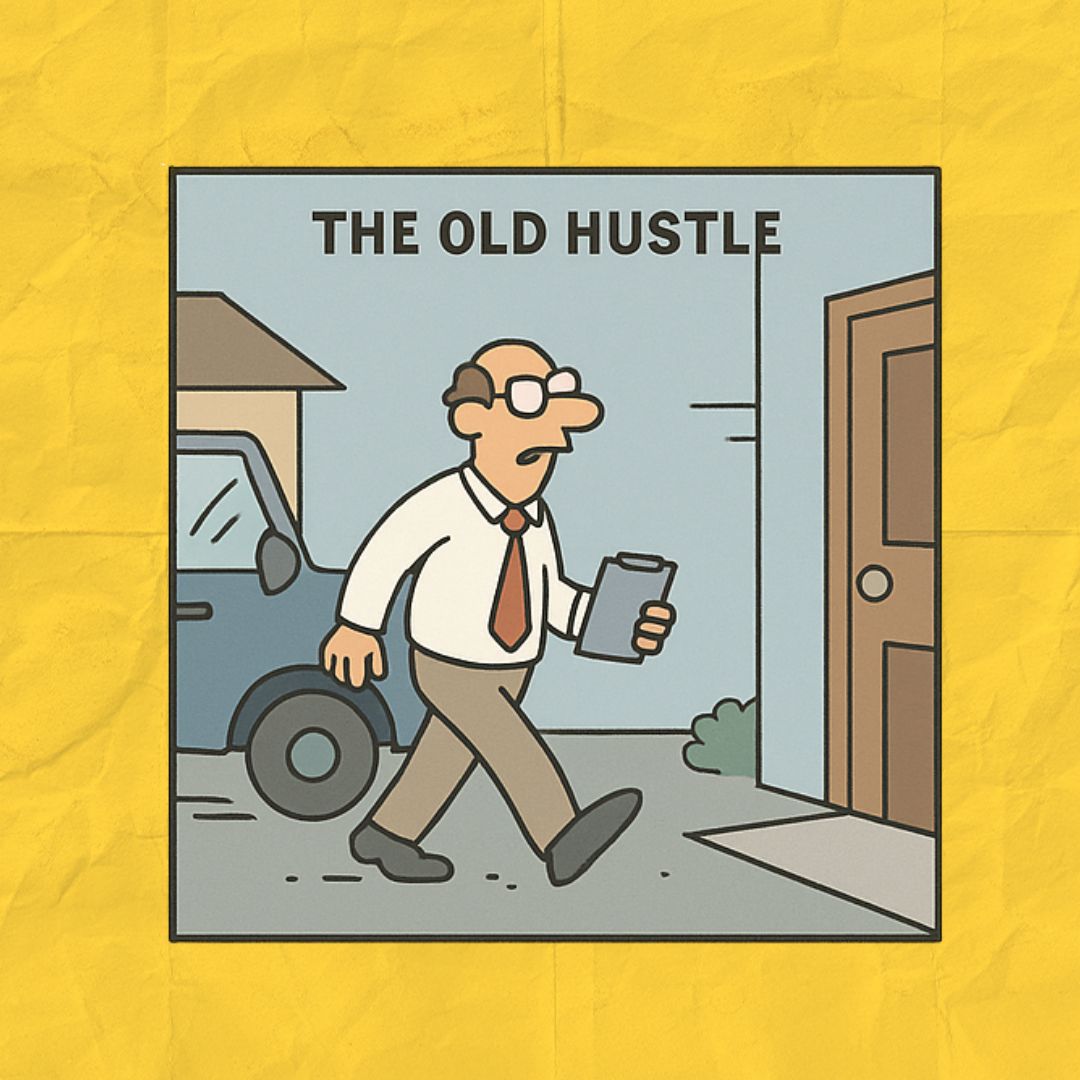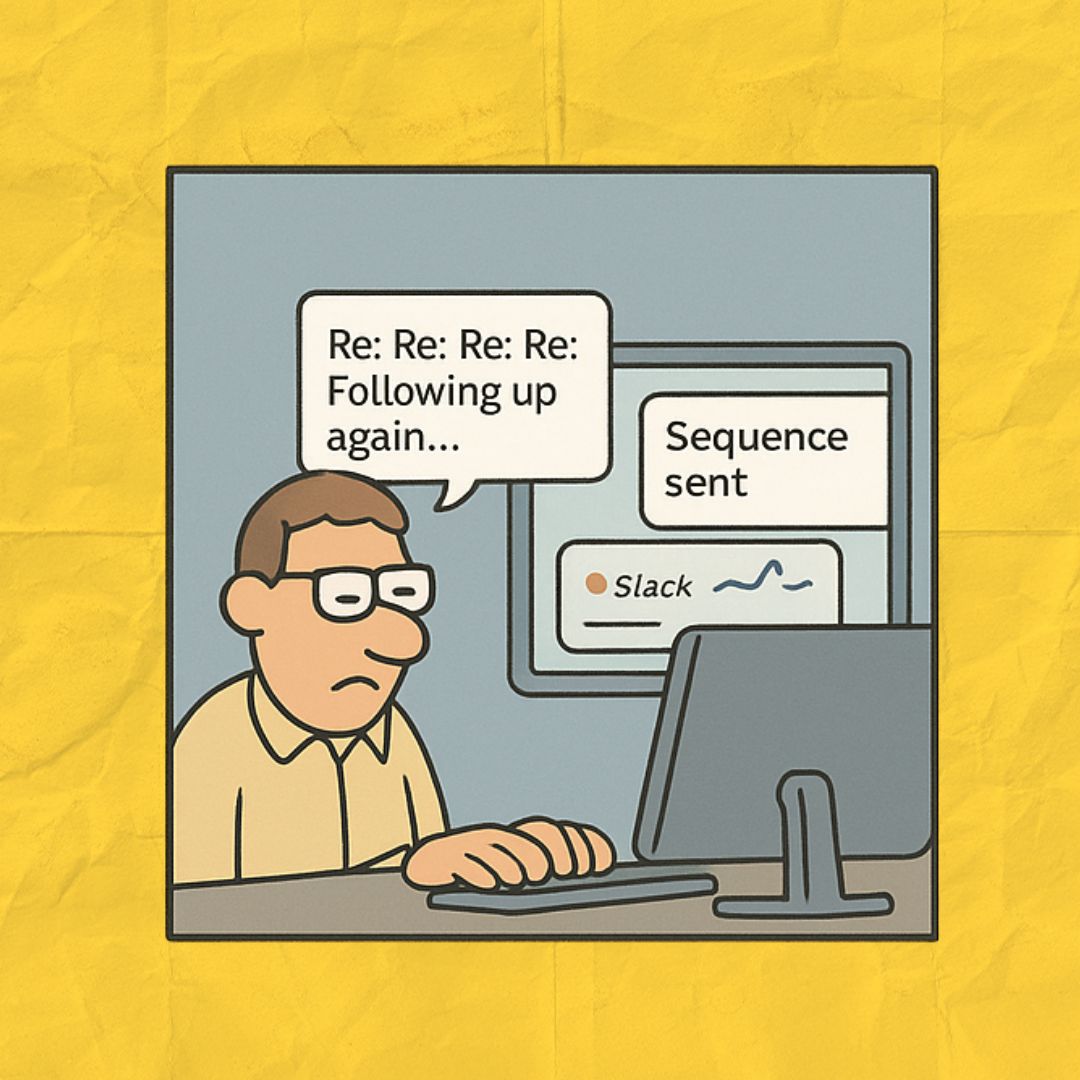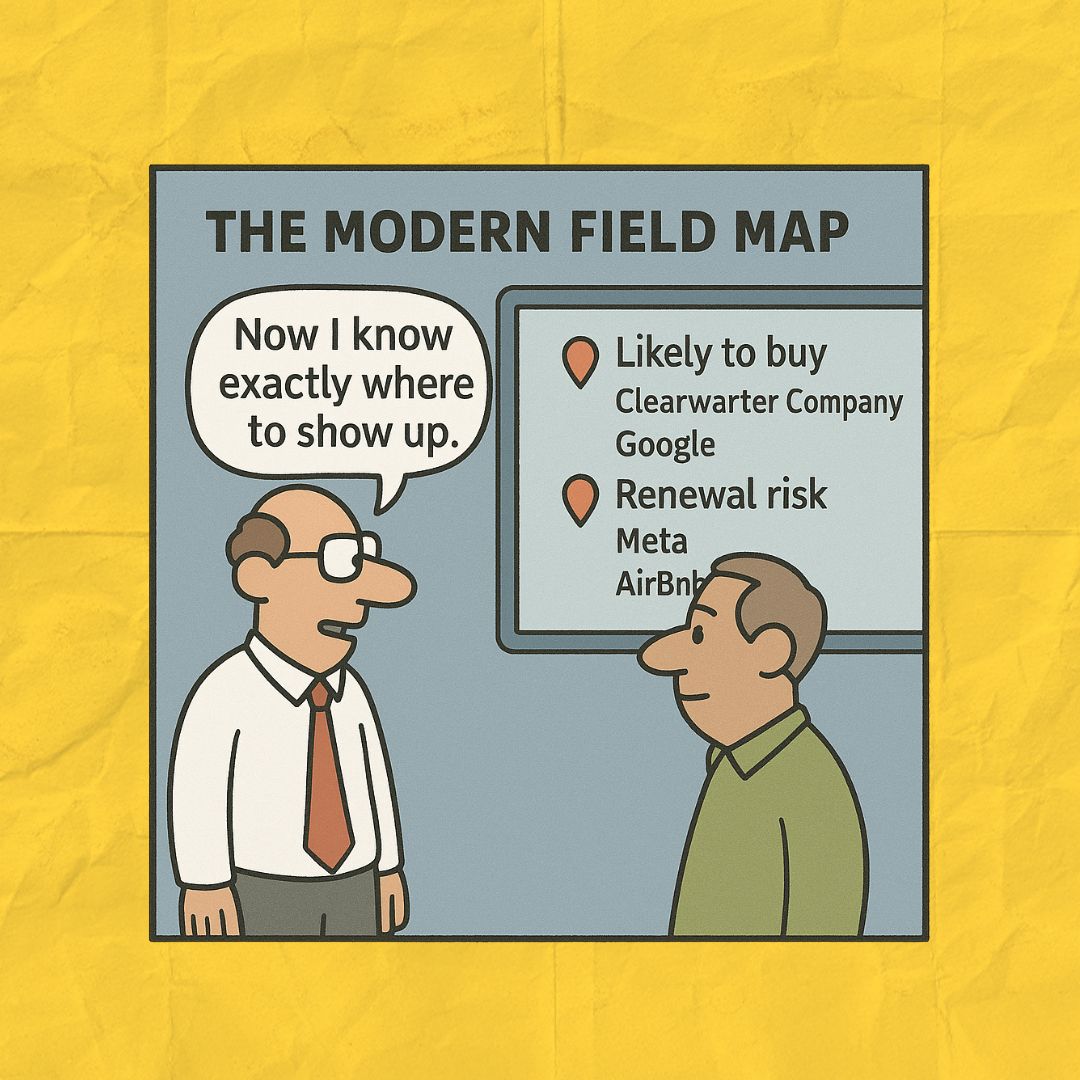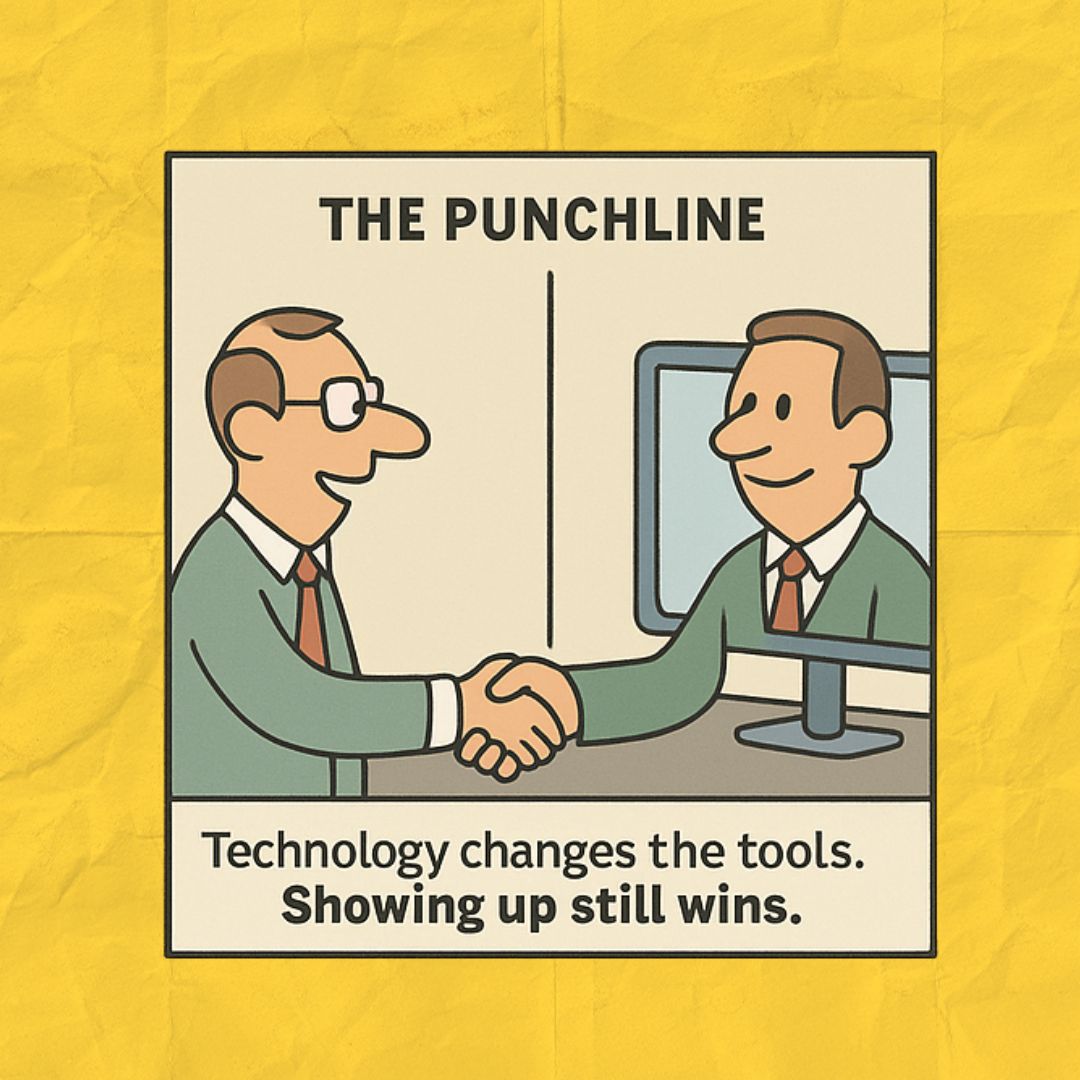- the Weekly Invoice
- Posts
- Do Only What's Best for You
Do Only What's Best for You
Human field selling destroys generalized automation (and informs smart AI implementation)
In field sales, the best results still come from showing up.
You know the drill: when a rep sets an appointment, gets out of the truck, shakes a hand, and reads the room — that’s when deals move. Not from blasting another email or dropping into an inbox they’ll never open.
Digital selling works the same way. The most effective sales teams aren’t automating more touches; they’re recreating that same experience of showing up — virtually, directly, and intelligently.
The truth is: message volume doesn’t equal momentum anymore. The teams that are winning in 2025 combine the precision of technology with the connection of face-to-face selling.

Selling Feels Familiar Again
Field reps understand this better than anyone: success comes down to focus, cadence, and context.
A study from Rallyware found that AI-driven field teams complete 70% more priority tasks and grow revenue by 30% — not by grinding harder, but by working smarter. They follow up faster because technology tells them who is likely to act and when. But the human part — the conversation, the read — remains everything.
That same balance is now reshaping digital sales. Gone are the days of uploading a 20,000-contact list to Apollo and firing off messages. Lists are burned. Prospects tune out identical emails.
Modern prospecting must bring the field model back online:
Scheduled, personal, well-timed, and focused on the person, not the pitch.
Outreach’s 2025 survey found that 52% of sales orgs using AI see 10–25% pipeline growth — not by messaging more, but by targeting better.
While cold outreach is stalling, Linkedin selling is taking off. Check out social selling to increase authority, grow audience and set nurtured call with your ICP.
Where the SDR Model Broke Down
Inside sales exploded as teams tried to scale. Office managers became appointment setters. SDRs chased volume. Tech stacks grew like weeds.
But in chasing “more,” we lost sight of what actually works: discovery, alignment, and human awareness of value.
That human touch, according to SuperAGI, still drives 60% of B2B customers to prefer talking to a person before a buying decision. The most successful sales systems today rebuild what we lost — using automation for set-up and prep, but leaving the connection to the people who know how to sell.
As one sales leader put it recently, “I don’t need AI to write my emails. I need AI to tell me who’s worth calling, when to call, and what matters to them before I pick up the phone.” (BTW Hubspot’s contact intelligence does most of this within their $15 core seat.)
That’s intelligent prospecting in a nutshell.

AI Prospecting is the New Field Map
Think of AI-driven prospecting as the new field book or route map — one that updates daily based on real behavior, not arbitrary filters.
Agentic AI systems (think Clay, Telescope, or N8N) analyze company movements, new hires, contract renewals, and tech adoption to show your team exactly where opportunity is shifting that week.
Companies that adopted agentic prospecting saw a 30% jump in lead quality and 25% more conversions within months.
McKinsey found that firms using AI-assisted prospecting outperform peers by up to 60% in revenue growth.
Even better: tools like N8N and GPT modular “Spaces” let sales leaders build their own automated playbooks — linking research, CRM updates, and outreach the same way reps used to organize door-to-door routes.
You don’t need to become a developer. You just need to understand how to customize these workflows like you would any process script — pilot it on a small route, refine it, and scale what sticks.
A Simpler Framework That Works
Whether you manage five reps or fifty, here’s a version of the automation framework that actually sticks:
Pilot with purpose
Run the AI or automation workflow with a small audience — old leads, test accounts, or a “friendlies” list. Tune it like you would a weekly ride-along: see what lands.Clarify success
Decide what “good” looks like: better first meetings booked? Faster follow-ups? More data quality? Track that single metric for 1–3 months before expanding.Learn from the pattern
Identify which steps lead directly to success — maybe it’s the way intro calls get framed, or how follow-ups are timed. Those become the keystones in your automation.Mix human and machine
Once you know what works, blend it. Automate data pulls, CRM updates, and reminder triggers — but keep your reps front and center for calls, demos, and meetings.
The key insight here: the AI should work for the rep, not the other way around.
Veloxy’s 2025 report captured this perfectly: top field sales teams aren’t using more tools, just smarter ones. They strip away friction, guard their time, and use AI as a co-pilot — never the driver.

Why “Platform Dependence” Stalls Growth
If there’s one trap that’s killing sales progress in 2025, it’s being too dependent on your platform.
Each vendor promises more automation, better insights, more “plug and play.” The result? Generic workflows that look the same across hundreds of companies.
But a one-size workflow rarely fits the pace and personality of your team.
Custom-built automations — designed for your own steps — adapt faster, cost less long-term, and keep ownership in-house. A recent McKinsey study found that teams building lightweight custom AI workflows realized ROI 3x faster than those buying pre-packaged “smart” tools.
The best analogy: prebuilt automation platforms are like scripted sales calls. They might get you started, but if you can’t pivot mid-conversation, you’ll lose attention fast.
Why This Matters (and How to Act)
The noise level in B2B sales has never been higher. Every inbox, ad, and timeline is fueled by “AI personalization.” When everyone sounds unique, nobody does.
What still stands out — and always will — is genuine understanding of the customer. The way you show up matters.
Start by modernizing the part of the process closest to your customer:
Use Claude or GPT to improve how your team researches industries and accounts.
Automate the prep, but not the call.
Combine your favorite human process (rapport, follow-up rhythm, on-site demos) with the best of digital visibility (timing, tracking, personalization).
As Bain recently found, field sales teams adopting daily AI-guided tasks hit 48% higher productivity and sustain compounding growth month over month.

The Field Sales Analogy That Still Applies
In-person sales always worked because it had rhythm and intent. You blocked time, set expectations, and showed up with purpose.
Digital sales workflows should do the same. Schedule your “walks” — in this case, personalized outreach rounds powered by data. Prep with precision. Then, deliver value that fits the customer’s moment.
AI is just the new route planner. The rep is still the closer.
Links & Signals
Field Sales Revival – Smart field teams are seeing a 30% revenue lift using AI-guided activity orchestration with 70%+ task completion.
AI Prospecting ROI – McKinsey reports AI-assisted sales prospecting drives 60% higher revenue growth across B2B firms.
Precision > Volume – Outreach found that smarter targeting, not more messages, drives 25% pipeline growth.
Human Still Wins – 60% of B2B buyers prefer a human connection for purchase decisions, especially in complex sales.
Working Smarter, Not Harder – Veloxy confirms that in 2025, agility, clarity, and simplicity define high-performing reps.
Technology changes the tools. It doesn’t change the truth:
Sales is still about showing up — prepared, present, and aligned.
Increased “generalized personalization” won’t do the trick.
Hyperfocused smart selling is still the answer. (It’s all preperation)
Your AI and automation should do one thing:
Help your reps open more doors, not create more noise.
-Grady
Tech moves fast, but you're still playing catch-up?
That's exactly why 100K+ engineers working at Google, Meta, and Apple read The Code twice a week.
Here's what you get:
Curated tech news that shapes your career - Filtered from thousands of sources so you know what's coming 6 months early.
Practical resources you can use immediately - Real tutorials and tools that solve actual engineering problems.
Research papers and insights decoded - We break down complex tech so you understand what matters.
All delivered twice a week in just 2 short emails.

